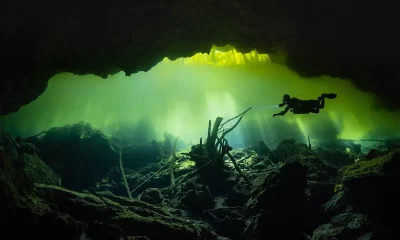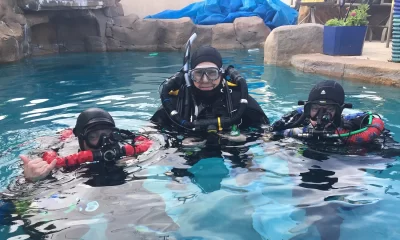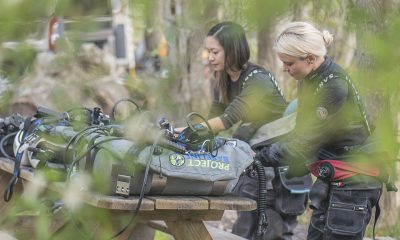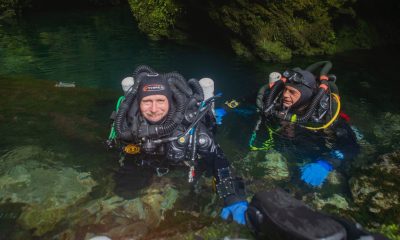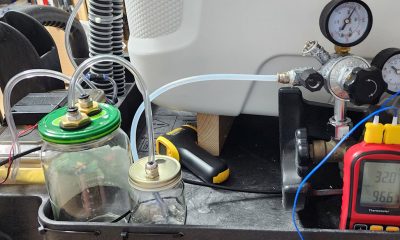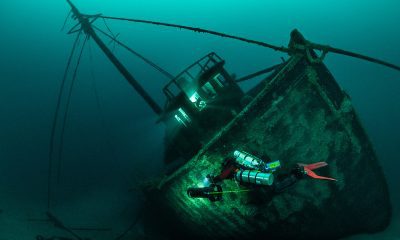
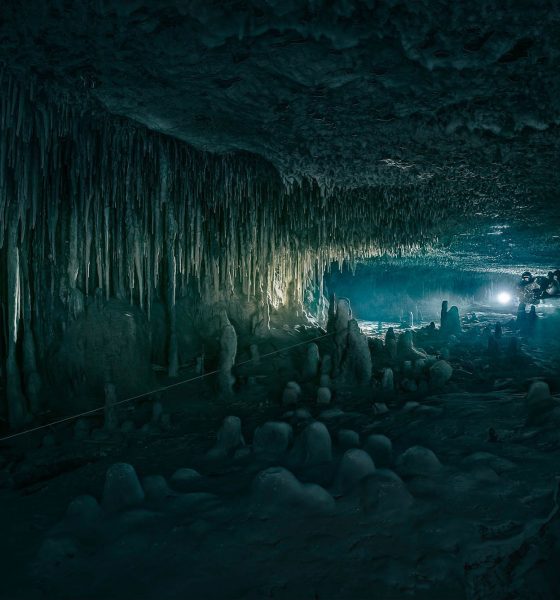
Cave
What Does It Cost to Become a Professional Cave Photographer?
We jokingly lament about the high cost of becoming a diver, let alone a tech diver—how many scooters do you have?!? But both of these arguably pale to the cost of becoming a cave photographer. Just ask underground picture-maker extraordinaire Fan Ping, who has invested close to US$200,000 over the last decade in his travaux d’amour. Here’s where the money went. Know how to make a small fortune in diving?
Text and images by Fan Ping. Lead image: Jump to Caterpillar at Cenote Xulo, Mexico. Six lights in total. Stage cave training is highly recommended as sometimes the location is at least 1-1.5 hour from the entrance, and a stage tank can greatly increase the flexibility of the shoot.
My name is Fan Ping, and I am a full time underwater photographer and filmmaker based in Atlanta, Georgia, USA. I have been diving mostly underwater caves in Florida and Quintana Roo over the last a few years, and I have a studio called Be Water Imaging that offers professional underwater imaging services, fine art prints, and an Underwater Cave Photography Masterclass. Today I would like to talk about what I have invested over the years to become a professional underwater cave photographer, and why I think some of these investments are necessary if you want to go down the same path.
I started diving and taking photos underwater in 2013, and did my first cave diving training in Mexico in 2015. I will list all the courses I have taken, along with primary dive gear and camera gear I have purchased. Items in black are necessary for a professional underwater cave photographer, but items in gray reflect my personal gear (and quantities).








Conclusions
1) The absolute minimum investment to become an underwater cave photographer is approximately $5,000 in training, $9-$10,000 in dive gear, and about $18-$20,000 in camera equipment.
2) In order to take all kinds of jobs in all environments, I have invested significantly more than the minimum—approximately $30,000 on training, $35,000 on dive gear, and $130,000 on camera equipment.
3) The numbers above do not include travel, accommodation, and diving expenses. These other costs can easily average $200/day if you do not have some caves in your backyard. Expanding your portfolio takes time, too, if you are not already a diving professional.
In a word, both the technical and financial barriers in underwater cave photography are extremely high. Considering how niche the market is—even just within scuba diving—this is a career that can hardly pay back.
But the challenge of being simultaneously 100% emotional (trying to create something artistic out of pristine nature) and 100% rational (to stay alive in such an unforgiving environment) brings an unparalleled sense of accomplishment for those who truly have a passion for it.
I hope that all professional underwater cave photographers can be reasonably compensated for their skills and talent and that more beautiful footage of mysterious underwater caves can be shared to help the public understand how closely we are connected to the veins of mother earth.
Dive Deeper
Here are some of Ping’s other stories:
InDEPTH: Plan The Shoot, Shoot The Plan by Fan Ping
InDEPTH: Close Calls: I Ripped My Drysuit a Kilometer Back In The Cave by Fan Ping
InDEPTH: Underwater Galaxy by Fan Ping
InDEPTH: Cameras Kill Cavers… Again by Natalie Gibb

Fan Ping is a photographer and filmmaker based in Atlanta, Georgia, USA, and is dedicated to showing the beauty of the underwater world to people through his lens. He specializes in combining artistic elements with nature and complex lighting skills in overhead environments, and this artistic style has brought him international acclaim, including awards from many major underwater photo/video competitions. You can follow his work on Facebook and Instagram: Be Water Imaging.



















